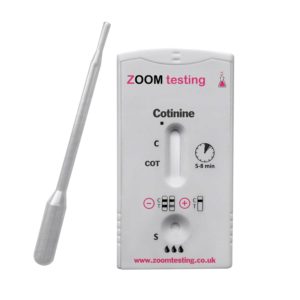A large study carried out by researchers at UC San Francisco discovered that parents typically know, or at least suspect, when their child is smoking, but parents of children who are vaping or using other tobacco products are more likely to be completely unaware.
23,000 participants aged between 12 and 17 years of age were tracked in the study which discovered that, when their child was using e-cigarettes, smokeless tobacco, or non-cigarette combustible products, the parents or guardians were significantly less likely to report knowing or even suspecting that their child was using tobacco.
Interestingly, researchers also discovered that when parents or guardians set rigid household rules about not using any form of tobacco – and these rules applied to all household members – it was significantly less likely that their children would start using tobacco. The research discovered that simply talking to kids about the disadvantages of smoking was much less effective.
In the UK, it is illegal for under 18’s to purchase e-cigarettes or vapes. Although it is not illegal fro 16 and 17 year olds to vape, they are not actually permitted, by law, to buy smoking paraphernalia.
In the same way as with cigarettes, a drug test for smoking can detect the recent use of vapes or tobacco products. This is because the body typically takes 2-3 days to expel all traces of the nicotine from the body.
1 in 4 High School Students Are Vaping
The smoking landscape has altered dramatically over the last decade, particularly with young people where cigarette smoking has declined, but there’s been a dramatic rise in the use of electronic cigarettes. The Centres for Disease Control and Prevention reported last year that at least one out of every four high school students had a vaping habit.
The UC San Francisco study used data compiled by PATH (Population Assessment of Tobacco and Health) in order to determine parental awareness, or lack of, of tobacco use by young people and how the role of household tobacco rules can prevent smoking. While the study looked at cigarettes and e-cigarettes, it also studied non-cigarette combustible products like pipes, cigars, bidis, and hookahs, in addition to smokeless tobacco products like chewing tobacco, snuff, dissolvable tobacco, and snus.
Study results revealed that parents and guardians were much more likely to suspect or even know that their child was using a nicotine or tobacco product if the child was male, identified as white, older, and lived with a tobacco user; this also included less educated parents, while mothers were found to be more aware than fathers.
It was also discovered that, when compared to young people living in permissive homes, teens and tweens living in homes where tobacco use was strictly prohibited were between 20 and 26% less likely to start using tobacco.
Researchers’ Suggestions
The researchers at UC San Francisco suggested that parents do the following –
- Don’t smoke (you can’t expect your children to not smoke if you do!)
- Make and enforce strict household rules against tobacco use and make it clear that the rules apply to all household members.
- Ensure that all parts of the home are tobacco-free environments; and
- Establish clear communications with all young people regarding the dangers of tobacco use.
Reasons why parents may not be aware of vaping
Parents may not be aware that their children are vaping for several reasons:
- Vaping devices can be small and discreet – Many vaping devices like e-cigarettes are designed to be portable and discreet. They don’t produce smoke like traditional cigarettes. This makes it easier for teens to hide vaping devices and use them without parents noticing.
- Vaping doesn’t leave a strong smell – Cigarette smoke has a very distinctive odor that is hard to mask. Vapor from vaping dissipates quickly and doesn’t leave a lingering smell on clothes or in rooms. The lack of odor makes it harder for parents to detect vaping.
- Teens use vaping devices at school or with friends – Many teens vape with friends or at school where parents aren’t present. They can keep their vaping activity concealed outside the home.
- Vaping devices and liquids are easy to conceal at home – Vapes can be charged through a computer or wall socket. Vaping liquids come in discreet containers that blend in with everyday items. Teens can successfully hide vaping paraphernalia in bedrooms, backpacks, etc.
- Symptoms of nicotine addiction may be confused with other issues – Signs of vaping addiction like mood swings, irritability, anxiety or poor concentration can be mistaken for normal teenage behavior or other problems. Parents may not connect these symptoms to an underlying vaping habit.
Dangers of teen vaping
While many teens believe vaping is harmless, it poses several risks:
- Nicotine is highly addictive and can impact brain development in adolescents. Teens who vape risk developing a lifelong addiction.
- Flavored vaping liquids contain chemicals and toxins that can harm lung health when inhaled. The long-term effects are still unknown.
- Vaping increases the risk of respiratory issues like chronic coughing, wheezing and asthma. These health issues can persist into adulthood.
- Teens who vape are more likely to start smoking traditional cigarettes. Vaping increases overall tobacco use.
- Frequent vaping can impact academic performance and participation in sports/activities due to addiction and lung health.
- Vaping exposes teens to risks of chemical burns or battery explosions if devices are poorly made or batteries are damaged.
How to Test If Your Child Has Been Vaping
Are you a concerned parent or partner, looking for an accurate and reliable way to detect nicotine use? Look no further than our Cotinine test kits. If you’ve never heard of Cotinine, Cotinine is the metabolite of nicotine, making it the perfect way to accurately test for nicotine use. Our test kits are easy to use and can detect nicotine use by measuring cotinine levels in urine or saliva.
Urine is the best when it comes to detecting smoking or vaping. Cotinine can be detected in urine for far longer than it can be in saliva. In fact, it can be detected in urine for up to 5 days after last use. This allows for a longer window of detection and more accurate results.
Zoom Testing Cotinine test kits can put your mind at rest. Our kits are designed to detect all types of nicotine use, including smoking, vaping, nicotine patches, and nicotine gum. All types of devices are covered. This makes them an incredibly versatile tool for any workplace or healthcare setting.
When it comes to checking for recent nicotine use, our Cotinine test kits have you covered. They can identify all forms of tobacco, vapes and vaping products that contain nicotine, nicotine patches, and nicotine gum.
Overall, if you’re looking for an easy-to-use, accurate, and reliable way to detect nicotine use, our Cotinine test kits are the perfect solution.
Photo by Nery Zarate on Unsplash
Zoom Testing is a leading UK drug testing company and a supplier of Drug Test Kits.
This post was originally published in 2017. It was last updated in June 2023.






